Nutrition and immunity in poultry
Prof. D.Narahari
Corporate consultancy Service
Senior Vice-President (IB) & Speakers’ bureau,
World’s Poultry Science Association,
Former Vice-president, Indian Poultry Science Association,
Former Professor & Head, Dept. of Poultry Science,
Tamil Nadu Veterinary & Animal Sci. University, Chennai-600007, INDIA
Email: <devareddynarahari@yahoo.com><narahari.devareddy@gmail.com>
Prevention is better than cure. –àBut immunity is better than prevention.Immunity will increase the general disease resistance power of the birds and thereby improve its productivity. Therefore in poultry production, the farmer must pay maximum attention, to develop immunity in the flock.There are several types of immunities, as shown in Figures1 and 2 below;but we are going to discuss here aboutimmunity of nutrition origin only. In large scale intensivepoultry production,only fast growing and high yielding hybrid birds arereared; which are generally more prone for infections, due to lesser disease resistance power and break down of immunity. Hence the farmer has to take several measures, not only to prevent break down of immunity, but also to boost the immunity. The immunity development by vaccination and by various immune-modulators are depicted in Figure-3.
Vaccination alone is not sufficient to boost immunity. Moreover, they are specific for a particular disease and vaccines are not available for many diseases. Vaccination failures and break down of immunity are more common, due to improper vaccination, poor nutrition, mycotoxins,, stress of various kinds, overcrowding, insufficient ventilation, poor flock management, improper housing, poor quality drinking water and many more reasons. There are several immunosuppressive diseases; which will not only cause that particular disease; but also results in general breakdown of immunity.Overall general immunity will not only prevent disease outbreaks, but also results in higher rate of production. Nutritionally balanced and toxin-free feed will boost the general immunity in the animals.
Fig.1: Different Types of Immunities
Fig.2: Immunities Classified in a Different Way
Fig.3: Immunity Development
Role of nutrients in immunity development
Various nutrients in the feed, especially micro-nutrients will play a major role in immunity development, as shown in Table-1. Besides the nutrients, non-nutrients feed supplements like probiotics, eubiotics, yeast, natural pigments, herbal feed supplements, spices, certain specific compounds also possess immune-modulating properties. Some of the specific compounds used as immune-modulators in poultry feeds are Livamisole, Immogen, Reserveratrol, Tetra-hydro-phenyl-imidazo-thiazole, Thymic factor and many more herbal active principles.
Table-1: Role of nutrients in immunity related functions
| Nutrient | Immunity related functions |
| Proteins | B-cell immunity function debilitated, atrophy of thymus |
| Arginine | Augments T-cell response |
| Lysine | Check viral proliferation |
| Omega-3 fatty acids | Increase the concentration of T-cells and Cytokines |
| Vitamin-A | WBC synthesis, Invasion of macrophages to kill microbes |
| Vitamin-E | Production of Interleukin-2, which kills microbes and cancer cells |
| B-complex | RBC &WBC production, cell mediated immunity |
| Vitamin-C | Prevents stress, anti-viral, killer cells, lymphocytes & interferon production |
| Manganese | Macrophage activity, enhances natural killer cells |
| Zinc | Immunodeficiency diseases and certain forms of cancer. Impaired thymus function, WBC production, serum IgM production, plaque forming cell response |
| Iron | Blastogenic response, circulating T-cells, humoral immunityantigen specific antibody titre, lactoferrin production, which invades microbes |
| Copper | T-cell controlled infections, T-cell mitogen response, Phagocytic cell anti-inflammatory effect |
| Selenium | Production of cytokines, prevents virus multiplication, especially influenza virus |
| Chromium | WBC respond to fight infection |
These immune-modulators in animal feeds will boost the general immunity in the animals, prevents break down of immunity due to toxins and diseases, prevents vaccination failure, act as anti-stressors, tonics, toxin neutralizers, anti-viral agents and rejuvenate the immune system in the body.
Many herbs and spices also possess immune stimulating properties, due to the presence of some active principles in them. Some of them are anti-viral and anti-carcinogenic agents. At the same time they are safe; without any side effects. Among the herbs, the most common immune boosting herbs are garlic, turmeric, ginseng (Panax ginseng), aswagandha (Withania sominifera), basil(Ocimum sanctum), white basil (Ocimum album), alfalfa and many more, as mentioned in Table-2. The principal constituents of these herbs are reported to possess anti-bacterial, anti-viral, carminative, stomachic, stimulant, immune-modulator and aromatic properties.
Table-2: Commonly used herbs with their active principles and functions
| Name of the herb | Active principles | Functions |
| Garlic | Allicin, allelic sulfide, aojene | Anti-microbial, reduces cholesterol |
| Curry leaves | Koenigin, murrayin | Stomachic ,general tonic, antioxidant, anti-diabetic |
| Thulasi (holy basil) & white basil | Eugenol, eugenic acid, carvecrol | Immunomodulator, reduces cholesterol , anti-microbial |
| Phyllanthus neruri | Phyllanthin, hypophyllanthin | Rejuvenates Liver cells, detoxification |
| Andrographis paniculata | Andrographolide | Rejuvenates hepatic cells, anti-viral, anti-oxidant |
| Solanum nigram (black night shade) | Solanin | Stomachic, cardiac tonic, appetizer, prevents gastric ulcers & cancer |
| Fenugreek seeds, Cinnamon | Methyl- hydroxyl-chalcone- polymer (MHCP) | Stomachic, reduces cholesterol and sugar, anti-diabetic |
| Grape seed & pulp | Resveratrol, lycopene, nirangenin | Anti-oxidant, increases good HDL cholesterol |
| Citrus pulp, tea waste | Flavonoid compounds | Anti-oxidant, anti-cancer |
| Various berries, including goose berry, blue berry | Anthocyanins | Anti-cancer, liver tonic |
| Leaves of broccoli, cauliflower, cabbage & turnip | Sulforaphane | Anti-cancer, antioxidant |
| Soy, clover | Isoflavonoids | Prevents arterial /capillary blocking |
| Flax seeds, canola, chia, fish oil | Alpha-linoleic acid(LNA), EPA, DHA | Lowers risk of cardio-vascular diseases, Reduces bad cholesterol |
| Spirulina, azolla | LNA, xanthophylls, chlorophyll | Yolk pigments, reduces cholesterol& stress, anti-oxidant |
| Turmeric | Curcumin | Anti-carcinogenic, anti-oxidant, anti-viral |
| Glycyrrhiza glabra | Licorice | Anti-microbial |
| Azaracta caryophyllus | Azaractin | Increase T-cell immunity |
| Alfalfa | Sataivin | Immune-modulator |
| Andrographis paniculata | Andrographolide | Prevents liver damage, neutralizes toxins & pesticides Immunomodulation, rejuvenator |
| Picroriza kurroa | Picroliv | Immunomodulation, rejuvenator |
| Embilica officinalis (Amla) | Ascorbic acid, Emblicanin | Immunomodulation, rejuvenator, anti-stress |
| Withania sominifera (Aswagandha) | Isopelletierine, Anaferine, Withanolides | Immunomodulation, rejuvenator |
| Ginseng (Ginseng panax) | Ginsenosides | Rejuvenator, Adaptogen |
| Terminalia chebula | Lupeol, Friedelin, Glucopanoside | Immunomodulation, rejuvenator, Anti-fungal |
| Trichopus zeylanicum (Arogya pacha) | Punigluconin, Flavonoids | Anti-stress, cures AIDS, immune-modulator, rejuvenator |
| Tinospora cardifolia | Tinosporin | Stimulates humoral & cell mediated immunity |
| Graviola /soursop/ guyabano | Graviolin | Powerful Anti-cancer agent, & immune-modulator |
| Cassia augustifolia (swarna patri) | Emodins, Chrysophanic acid | Anti-microbial, blood purifier |
| Bringaraj / Asteraceae Eclypta alba | Wedelolactone, furanocoumarins, oleanane & taraxastan
|
Liver cell rejuvenator, toxin neutralizer, immunomodulation, |
Many herbal Pharmaceutical products, having combination of several herbs, essential oils (eubiotics), naturalpigments etc.; sometimes with other immune-modulators are used in poultry feeds, to boost immunity, prevent vaccination failures, as anti-viral, liver & general tonics, performance enhancers, anti-stressors and as rejuvenators. These products will also reduce mortality and improve the overall production performance of the animals. Therefore they are used now as safe substitutes for antibiotic growth promoters (AGP) in many countries. Unlike AGP, these products are not having any side effects,no drug residues and no ban in any country. Immune-modulators, especially herbs are used in combination, instead of single product. They protect the liver, kidneys and other vital organs from damage by microbes, as well as mycotoxins. They are used at 250g to 1kg /ton of feed, on a regular basis, in many countries, to boost immunity and prevent breakdown of immunity. Some of the herbal based immune-modulators and liver /kidney rejuvenators’ formulations are given below.
a) Immune-modulator- cum- liver tonic formulae:
Each kg contains, Amla (goose berry) powder= 25g, Aswagandha (Rovalfia serpentina) root powder= 5g, Thulasi /holi basil leaves (ocimum sanctum)= 50g, Turmeric powder=100g, Andrographispaniculata= 10g, White basil=Ocimum album (dogthulasi)= 20g, Eclipta alba (bringaraj / kasilangani) powder= 20g, Phylanthus neruri = 20g, Alfalfa (Medicago sativa / lucern) leaf powder= to make 1kg, Dose= 250 g to 1 kg /ton of feed.
b) Eubiotic performance enhancer:
Eubiotics are latest generation performance enhancers, used in livestock and poultry feeds. They are safe and effective, permitted by FDA and European Union. They are essential oils and oleoresins of plant origin like oil of winter green, eucalyptus oil, lemon grass oil, ginger oil, clove oil, peppermint oil, cinnamaldehyde, carvacrol etc. Used in all feeds to enhance growth rate, egg production, for disease resistance, appetizer, and stomachic.
Composition = each kg contains, Ginger powder=100g, Winter green oil=2-5g, Lemon grass oil=2-5g, Eucalyptus oil= 10g, Capsicum oleoresin (from red pepper)=5g, Turmeric powder= 100g, Vishamushti( nuxvomica ) seed powder= 5g, Lucern leaf powder= to make 1kg, Dose= 500 g to 1 kg /ton of feed, c).Liver rejuvenator and general tonic:Each kg contains: Eclypta alba= 100g, Phyllanthus neruri=50g, Amla (Embilica officinalis)= 50g, Choline = 200g, Andrographis paniculata= 25g, Terminalia chibula= 50g, Picroriza kurra= 25g, Alfalfa /lucern meal= to make 1kg, Dose =250 to 500 g /ton of feed.
For more details please contact the author by e-mail : devareddynarahari@yahoo.com,narahari.devareddy@gmail.com.
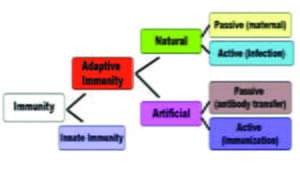
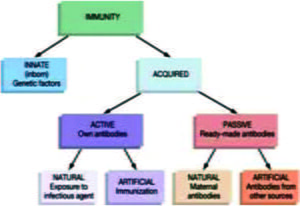
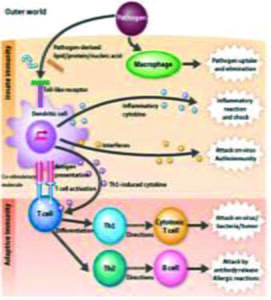

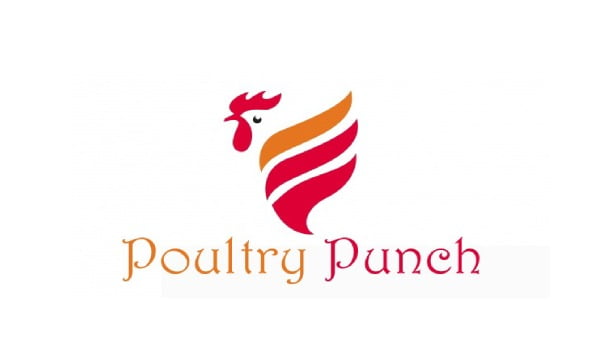


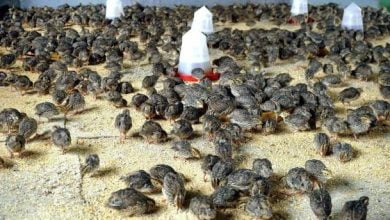
Hi. I’m glad he found thepoultrypunch.com website, I really like it,
the article is very useful and I shared it! In order to survive the hard times ahead we found
2 very good books, you can download them
here: https://bit.ly/2RlAHdb and here: https://bit.ly/3e3Bg59
Great success with this site!
An excellent analysis of Nutrition and immunity, a useful and very practical article